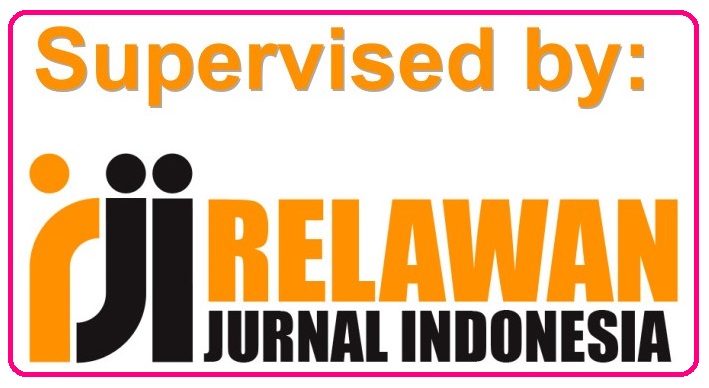Formal and Informal Language Expressions Used by English Students of Indonesia in Classroom Presentation-Interaction
DOI:
https://doi.org/10.31849/elsya.v4i1.8293Keywords:
Formal Language, Informal Language, Situation, Social Status, Age Differences, FamiliarityAbstract
Analysing communication strategies remains crucial to overcome communication problems in classroom interaction since it directs the students to receive successful English learning results. One strategy to communicate is applying an appropriate language level of formality in the classroom. However, there have been very limited researches that explore formal and informal languages in the classroom context. This research aims to discuss the characteristics and factors influencing students in using formal and informal expressions in the classroom presentation-interaction. This research applied a qualitative method taking twenty-two students of Universitas Negeri Makassar as participants. The data from classroom observation, voice-recording, and interview were analysed using the discourse analysis approach. The result of the research shows that characteristics of formal and informal language are absolutely opposite, namely complete versus uncompleted sentence, politeness versus familiarity words, and precise versus colloquialism words. The result of the research also shows factors influencing the use of formal and informal language are formal situations, communication purposes, status and age differences, and familiarity. This research also found the relation of using formal language as students' strategies to be polite to the lecturer in classroom interaction. Results of this research are significant for students in shaping good strategies in using formal or informal language expressions to achieve effective communication in classroom interaction.
References
Agha, A. (1994). Honorification. Annual Review of Anthropology, 23(1), 277-302. doi: 10.1146/annurev.an.23.100194.001425
Bakinova, E., Basharin, A., Batmanov, I., Lyubort, K., Okhotin, A., & Sazhneva, E. (2020). Formal languages over GF (2). Information and Computation, 104672.
Banikalef, A. A., Maros, M., Aladdi, A., & Al-natour, M. (2015). Apology Strategies in Jordanian Arabic. GEMA Online® Journal of Language Studies, 15(2).
Brown, P., & Fraser, C. (1979). Speech as a marker of situation. In Social markers in speech (pp. 33-62). Cambridge: Cambridge University Press.
Brown, R. & Gilman, A. (1960). The Pronouns of Power and Solidarity. In P. Giglioli (1972) (Ed), Language and Social Context, 252-282. Harmonsworth: Penguin.
Brown, P. & Levinson, S. 1987. Politeness: Some Universals in Language Use. Cambridge; New York: Cambridge University Press.
Celce-Murcia, M. and Olshtain, E. (2000). Discourse and Context in Language Teaching: A Guide for Language Teachers. New York: Cambridge University Press.
Dassow, J., & Păun, G. (1989). Regulated rewriting in formal language theory (Vol. 18). Berlin: Springer.
Dwijatmoko, B. B. (2018). Honesty in Indonesian Literature: Its Social and Cultural Factors. GEMA Online® Journal of Language Studies, 18(4).
Farrokhi, F., & Mahmoudi-Hamidabad, A. (2012). Rethinking convenience sampling: Defining quality criteria. Theory & Practice in Language Studies, 2(4).
Floreddu, P. B., & Cabiddu, F. (2016). Social media communication strategies. Journal of Services Marketing, 30(5), 490-503.
Foyewa, R., Adebanjo, A., & Ogundepo, A. (2016). Language and Situation: An Examination of the English Language in Nigeria. International Journal of Advanced Academic Research, 2(5), 8-14.
Galletta, A. (2013). Mastering the semi-structured interview and beyond. New York University Press.
Govindaraj, R. (2021). Computational theory of formal languages on picture languages. Materials Today: Proceedings.
Haryono, A. (2011). Pola Komunikasi Warna NU etnis Madura sebagai Refleksi Budaya Paternalistik. Humaniora: Jurnal Budaya, Sastra dan Bahasa. 23(2). 175-184.
Hayawaka, S. I., editor. (1994). Choose the Right Word: A Contemporary Guide to Selecting the Precise Word for Every Situation. 2nd Edition, revised by Eugene Ehrlich. HarperCollins Publishers, NY, USA.
Holmes, J. (1995). Women, men, and politeness. London and New York: Longman.
Hymes, D. (1972). On Communicative Competence. In J. Pride, & J. Holmes (Eds.), Sociolinguistics (pp. 269-285). Harmondsworth: Penguin Books.
Irvine, J.T. (1979) Formality and Informality in Communicative Events, Amercian Anthropologist 81, 773-790.
Jaafar, M. F., & Awal, N. M. (2020). Variasi Linguistik di Greater KL (Linguistic Variation in Greater KL). GEMA Online® Journal of Language Studies, 20(2).
Johnstone, B. (2008). Discourse analysis (2nd edn.). Malden, MA: Blackwell.
Kamalu, I., & Osisanwo, A. (2015). Discourse analysis. Issues in the study of language and literature: Theory & practice. Ibadan: Kraft Books Limited, 189-191.
Kraut et al. (1990). Informal communication in organizations: Form, function, and technology. Human reactions to technology: Claremont symposium on applied social psychology,145-199.
Kouwenhoven, H., Ernestus, M., & van Mulken, M. (2018). Communication strategy used by Spanish speakers of English in formal and informal speech. International Journal of Bilingualism, 22(3), 285-304.
Labov, W. (1972). Sociolinguistic Patterns. Philadelphia: University of Philadelphia Press.
Mahmud, M. (2013). The roles of social status, age, gender, familiarity, and situation in being polite for Bugis society. Asian Social Science, 9(5), 58-72.
Mahmud, M. (2019). The use of politeness strategies in the classroom context by English university students. Indonesian Journal of Applied Linguistics, 8(3), 597-606.
Mashudi, R., Rahmat, H., Sanudin, S. R., Suliman, S., & Musanif, A. M. (2017). Peraturan interaksi peristiwa komunikatif wawancara dalam akhbar (Rule of interaction in the press’ communicative events interview). GEMA Online Journal of Language Studies, 17(3), 70-85.
Moldagaliyev, B. (2019). Randomness of formal languages via automatic martingales. Theoretical Computer Science, 782, 113-128.
McCarthy, M. (1991). Discourse analysis for language teachers. Cambridge: Cambridge University Press.
Meiristiani, N. (2011). Understanding tenor in spoken texts in year XII English textbook to improve the appropriacy of the texts. Indonesian Journal of Applied Linguistics, 1(1), 39-55.
Moll, R. N., Arbib, M. A., & Kfoury, A. J. (2012). An introduction to formal language theory. Springer Science & Business Media.
Oyetade, S. O. (1995). A sociolinguistic analysis of address forms in Yoruba. Language in society, 24(4), 515-535.
Pasaribu, A. N., Saragih, E., & Gea, A. (2022). Politeness in Thesis Consultation by WhatsApp: Do Lecturers and Students Apply Different Strategies?. Elsya: Journal of English Language Studies, 4(1).
Pathak, V., Jena, B., & Kalra, S. (2013). Qualitative research. Perspectives in clinical research, 4(3).
Pradianti, W. (2013). The Use of Slang Words Among Junior High School Students in Everyday Conversation (A case study in the ninth grade students of a junior high school in Bandung). Passage, 1(1), 87-98.
Purwati, D. (2019). Formal and Informal Talks of Lecturers in EFL Classroom Interaction (Doctoral dissertation, UNIVERSITAS NEGERI MAKASSAR).
Richards, J. Platt, J. & Platt, H. (1997). Dictionary of Language Teaching and Applied Linguistics. London: Longman.
Risdaneva. (2014). Exploring interpersonal interaction in written discourse. Englisia: Journal of Language, Education, and Humanities, 2(1), 60-69. doi: 10.22373/ej.v2i1.322
Saville-Troike, M. (2008). The Ethnography of Communication. An Introduction. UK: Blackwell Publishing Ltd.
Scupin, R. (1988). Language, hierarchy, and hegemony: Thai Muslim discourse strategies, Language Sciences, 10(2), 331-351. doi: 10.1016/0388-0001(88)90020-4
Sembiring, E. M. B., Sianturi, S., Simanjuntak, F. M. P., & Tarigan, S. N. (2021). The Students’ Strategies in Online Learning Interaction: Exploring Politeness in Google Classroom during Covid-19 Pandemic. Elsya: Journal of English Language Studies, 3(3), 205-214.
Shah, M., Pillai, S., & Sinayah, M. (2020). Identity Construction through Code-Switching Practices at a University in Pakistan. GEMA Online® Journal of Language Studies, 20(4).
Sheika, F. A., & Inkpen, D. (2012). Learning to classify documents according to formal and informal style. Linguistic Issues in Language Technology, 8(1), 1-29.
Simpuruh, I., Mahmud, M., Salija, K., & Halim, A. (2020). Code-Crossing in Indonesian EFL Classroom Interaction. International Journal of Language Education, 4(3), 334-349.
Sukarno, S. (2015). Politeness Strategies in Responding to Compliment in Javanese. Indonesian Journal of Applied Linguistic. 4(2). 226-236
Sukarno, S. (2018). Politeness strategies, linguistic markers and social contexts in delivering requests in Javanese. Indonesian Journal of Applied Linguistics, 7(3), 659-667. doi: 10.17509/ijal.v7i3.9816
Straker, D. (1980). Situational variables in language use. International Journal of the Sociology of Language, 1980(26), 101-122.
Susanto, D. (2014). The Pragmatic Meanings of Address Terms Sampeyan and Anda. Indonesian Journal of Applied Linguistics, 4(1), 140-155.
Tanasy, N., Nasir, A. M., & Yulianti, N. I. R. (2020). Mapping the Linguistic Politeness of Dusun Tangkuru Society: The Pattern of Politeness in Makassar. Elsya: Journal of English Language Studies, 2(3), 82-87.
Toro, M. (2019). A general overview of formal languages for individual-based modelling of ecosystems. Journal of Logical and Algebraic Methods in Programming, 104, 117-126.
Wajdi, M., & Subiyanto, P. (2018). Equality marker in the language of Bali. In Journal of Physics: Conference Series, 953(1), p. 012065). IOP Publishing.
Winter, B., & Grawunder, S. (2012). The phonetic profile of Korean formal and informal speech registers. Journal of Phonetics, 40(6), 808-815.
Woods, G. (2017). English grammar for dummies. John Wiley & Sons.
Yusuf, R., & Anwar, A. (2019). An Article Review on “The Use of Politeness Strategies in the Classroom Context by English University Students. Elsya: Journal of English Language Studies, 1(2), 69-73.
Zahid, I., & Johari, A. (2018). Kesantunan Melayu: Analisis Konteks Perbualan dalam Rancangan Bual Bicara (Malay Politeness: Conversational Context Analysis in Talk Show). GEMA Online® Journal of Language Studies, 18(4).
Downloads
Published
Issue
Section
License
- Author retains the copyright and grants Elsya Journal the right of first publication of the work simultaneously licensed under the Creative Commons Attribution-ShareAlike 4.0 License that allows others to share the work with an acknowledgment of the work's authorship and initial publication in this journal
- The author is able to enter into separate, additional contractual arrangements for the non-exclusive distribution of the journal's published version of the work (e.g., post it to an institutional repository or publish it in a book) with the acknowledgment of its initial publication in this journal.
- The author is permitted and encouraged to post his/her work online (e.g., in institutional repositories or on their website) prior to and during the submission process, as it can lead to productive exchanges, as well as earlier and greater citation of the published work (See The Effect of Open Access).












 Elsya Journal is licensed under
Elsya Journal is licensed under 